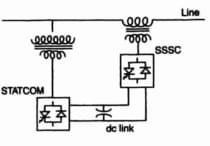
|
|
Control System |
1. Which of the following is exhibited by Root locus diagrams ?
(a) The poles of the transfer function for a set of parameter values
(b) The bandwidth of the system
(c) The response of a system to a step input
(d) The frequency response of a system
(e) None of the above
2. ________directly converts temperature into voltage.
(a) Thermocouple
(b) Potentiometer
(c) Gear train
(d) LVDT
(e) None of the above
3. The transfer function technique is considered as inadequate under which of the following conditions ?
(a) Systems having complexities and non-linearities
(b) Systems having stability problems
(c) Systems having multiple input dis¬turbances
(d) All of the above
4. Which of the following is the output of a thermocouple ?
(a) Alternating current
(b) Direct current
(c) A.C. voltage
(d) D.C. voltage
(e) None of the above
5. A.C. servomotor is basically a_______.
(a) universal motor
(b) single phase induction motor
(c) two phase induction motor
(d) three phase induction motor
6. The first order control system, which is well-designed, has a_________.
(a) small bandwidth
(b) negative time constant
(c) large negative transfer function pole
(d) none of the above
7. Which of the following can be measured by LVDT?
(a) Displacement
(b) Velocity
(c) Acceleration
(d) Any of the above
8. A differentiator is usually not a part of a control system because it______.
(a) reduces damping
(b) reduces the gain margin
(c) increases input noise
(d) increases error
9. If the gain of the critical damped system is increased, it will behave as______.
(a) oscillatory
(b) critically damped
(c) over damped
(d) under damped
(e) none of the above
10. In a control system, integral error compensation _______ steady state error.
(a) increases
(b) minimizes
(c) does not have any effect on
(d) any of the above
11. With feed back _____ reduces.
(a) system stability
(b) system gain
(c) system stability and gain
(d) none of the above
12. An amplidyne can give which of the following characteristics ?
(a) Constant current
(b) Constant voltage
(c) Constant current as well as constant voltage
(d) Constant current, constant voltage and constant power
(e) None of the above
13. Which of the following is an electromechanical device ?
(a) Induction relay
(b) Thermocouple
(c) LVDT
(d) Any of the above
(e) None of the above
14. The effect of error damping is to_______.
(a) provide larger settling lime
(b) delay the response
(c) reduce steady state error
(d) any of the above
(e) none of the above
15. ______.technique gives quick transient and stability response.
(a) Root locus
(b) Bode
(c) Nyquist
(d) Nichols
16. A phase lag lead network introduces in the output_________.
(a) lag at all frequencies
(b) lag at high frequencies and lead at low frequencies
(c) lag at low frequencies and lead at high frequencies
(d) none of the above
17. Which of the following is the non-linearity caused by servomotor ?
(a) Static friction
(b) Backlash
(c) Saturation
(d) None of the above
18. can be extended to systems which are time-varying ?
(a) Bode-Nyquist stability methods
(b) Transfer functions
(c) Root locus design
(d) State model representatives
19. When the initial conditions of a system are specified to be zero, it implies that the system is_____.
(a) at rest without any energy stored in it
(b) working normally with reference input
(c) working normally with zero reference input
(d) at rest but stores energy
20. _____is not a final control element.
(a) Control valve
(b) Potentiometer
(c) Electro-pneumatic converter
(d) Servomotor
21. Which of the following is the definition of proportional band of a controller ?
(a) The range of air output as measured variable varies from maximum to minimum
(b) The range of measured variables from set value
(c) The range of measured variables through which the air output changes from maximum to minimum
(d) Any of the above
(e) None of the above
22. In pneumatic control systems, the control valve used as final control element converts____.
(a) pressure signal to electric signal
(b) pressure signal to position change
(c) electric signal to pressure signal
(d) position change to pressure signal
(e) none of the above







0 Comments
If you have any doubt, feel free to ask.